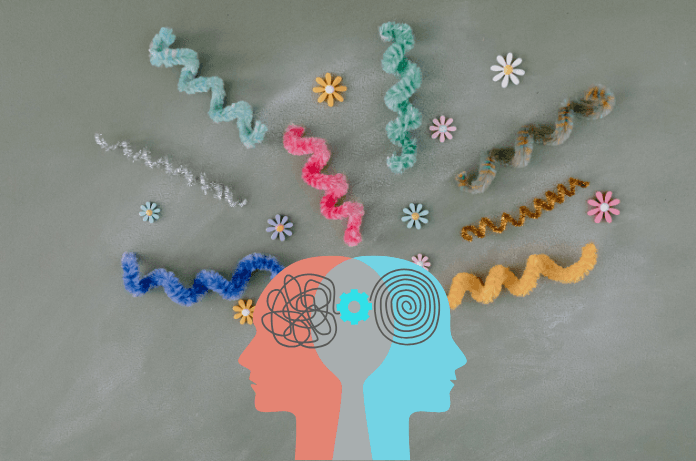In the world of neuroscience, the pursuit of understanding how neural circuits give rise to behavior often gets researchers to the most unexpected places. For MIT neuroscientist Steven Flavell, that place is the tiny roundworm Caenorhabditis elegans. C. elegans is a simple organism with exactly 302 neurons. Despite its simplicity, this worm is proving to be a powerful model for unraveling the complex dance between brain activity and behavior.
Flavell is an associate professor of brain and cognitive sciences and a researcher with the Picower Institute for Learning and Memory at MIT and the Howard Hughes Medical Institute. He focuses on understanding how neural circuits control motivated behaviors like feeding and navigation. By studying these behaviors in C. elegans, Flavell aims to shed some light on fundamental mechanisms that could also be at play in other large animals, including humans.
Why the Worm – C. elegans?
Elegans have one of the most thoroughly mapped nervous systems in the animal realm. Researchers have documented each of the 302 neurons and the approximately 7,000 synaptic connections between them. This comprehensive “connectome” allows scientists to study how these neurons interact to generate various behaviors. Despite its minuscule size, the worm displays behaviors such as feeding, locomotion, egg-laying, memory formation, sleep, and even social interactions.
Flavell’s fascination with the roundworm stems from the potential to explore neural circuits in a simpler, more manageable system than the mammalian brain. “The transition rates between those states really depend on all these cues in the environment,” Flavell explains. “How good is the food environment? How hungry are they? Are there smells hinting at a better food source nearby? The animal processes all this information and changes how it searches for food.”
Flavell’s Journey From London To The Lab
Flavell’s journey into neuroscience was somewhat unexpected. Born in London to an English father and a Dutch mother, Flavell moved to the United States at the age of two when his father took a position as chief scientific officer at Biogen. Growing up in Sudbury, Massachusetts, in a family steeped in science—his mother was a computer programmer and math teacher, and his father was later a Yale University immunology professor—Flavell seemed destined for a scientific path.
Yet, as an undergraduate at Oberlin College, Flavell initially considered majoring in English, drawn by his passion for music. However, it was his classes in psychology and physiology that ultimately captivated him. These led him to discover his true calling in neuroscience. “I was immediately sold on neuroscience. It combined the rigor of the biological sciences with deep questions from psychology,” he recalls.
During college, Flavell immersed himself in research, initially working on a summer project related to Alzheimer’s disease at Case Western Reserve University. This experience ignited his passion for laboratory work, which he describes as “running experiments, looking at brand new results, and trying to understand what they mean.”
The Shift to Neuroscience
After earning his PhD in neuroscience from Harvard Medical School, where he worked on sensory experience and neural activity in brain development, Flavell’s focus shifted during his postdoctoral fellowship at Rockefeller University. There, he joined Cori Bargmann’s lab and transitioned to studying neural circuits in C. elegans. The simplicity of the worm’s nervous system made it an attractive model for understanding how neurons across the brain govern behavior.
Flavell says, “Studying how neurons across the brain control behavior seemed almost impossible in a large brain. But I quickly got excited about studying this in C. elegans because, at the time, it was the only animal with a full brain blueprint.
Mapping the Mind
In his early work with C. elegans, Flavell focused on stable behavioral states, such as how the worms forage for food. His lab discovered that these states are regulated by neuromodulators like serotonin, which is similar in humans too. Flavell’s lab created a detailed map of the C. elegans serotonin system and identified how neurotransmitter controls behavior. Also, his lab tried to understand how this study could apply across species.
“Our studies of how the serotonin system works and controls behavior have already revealed basic characteristics of serotonin signaling,” he says. “With the resolution to study specific C. elegans neurons and the way they implement behavior, we can discover fundamental features of the way that neurons act.”
“With the key that you can get studying specific C. elegans neurons and the way they implement behavior, we can discover fundamental features of the way neurons act.”
A Multidisciplinary Approach
Flavell’s work requires a broad range of expertise, combining elements of physics, math, computer science, biology, and neuroscience. At MIT, his team has diverse backgrounds, and the environment fosters collaboration across different scientific disciplines. This multidisciplinary approach enables his team to engineer microscopes, build computational models, and develop molecular techniques to manipulate neurons in C. elegans.
Flavell says “Multidisciplinary tools at MIT enhanced my efficiency by enabling me to use tools that lead to exciting research results.”
A Window into Human Behavior
Flavell’s research with C. elegans may seem far removed from human experience, but the insights gained from this tiny worm are anything but comparatively little. By understanding the neural circuits that control behavior in such a simple organism, Flavell and his team hope to uncover principles that govern brain function across all animals, offering a window into the complexities of human behavior.
In Flavell’s view, the evolutionary conservation of these neural mechanisms underscores their importance. He says, “The machinery used to control these states in C. elegans — for example, neuromodulators — are the same as in humans. These trails are evolutionarily age-old.”
Through the roundworm C.elegans, Flavell’s work continues to explore the intricate connections between brain activity and behavior, promising new insights into the neural basis of our own actions.

